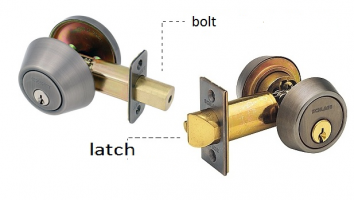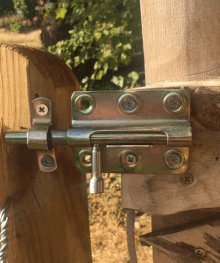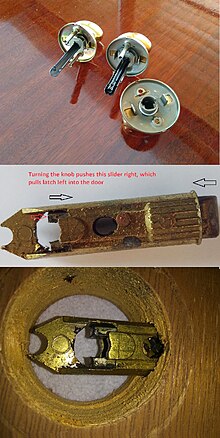Apartment building
So in a rated corridor, there is a fire rated door to hvac closet. This door you open and all that is in it one unit hvac unit. You can walk into the closet, door is there just to service the hvac.
So said Door only has a single leaf.
Dead bolt ok ?? Does it meet the latch requirement. ???
Does it meet # 2 below,,, even though it is not a pair of doors??
Or is there another section of the code that would allow the dead bolt??
1010.1.9.5Bolt locks.
Manually operated flush bolts or surface bolts are not permitted.
Exceptions:
So in a rated corridor, there is a fire rated door to hvac closet. This door you open and all that is in it one unit hvac unit. You can walk into the closet, door is there just to service the hvac.
So said Door only has a single leaf.
Dead bolt ok ?? Does it meet the latch requirement. ???
Does it meet # 2 below,,, even though it is not a pair of doors??
Or is there another section of the code that would allow the dead bolt??
1010.1.9.5Bolt locks.
Manually operated flush bolts or surface bolts are not permitted.
Exceptions:
- 1.On doors not required for egress in individual dwelling unitsor sleeping units.
- 2.Where a pair of doors serves a storage or equipment room, manually operated edge- or surface-mounted bolts are permitted on the inactive leaf.
- 3.Where a pair of doors serves an occupant load of less than 50 persons in a Group B, F or S occupancy, manually operated edge- or surface-mounted bolts are permitted on the inactive leaf. The inactive leaf shall not contain doorknobs, panic bars or similar operating hardware.
- 4.Where a pair of doors serves a Group B, F or S occupancy, manually operated edge- or surface-mounted bolts are permitted on the inactive leaf provided that such inactive leaf is not needed to meet egress capacity requirements and the building is equipped throughout with an automatic sprinkler system in accordance with Section 903.3.1.1. The inactive leaf shall not contain doorknobs, panic bars or similar operating hardware.
- 5.Where a pair of doors serves patient care rooms in Group I-2 occupancies, self-latching edge- or surface-mounted bolts are permitted on the inactive leaf provided that the inactive leaf is not needed to meet egress capacity requirements and the inactive leaf shall not contain doorknobs, panic bars or similar operating hardware.





